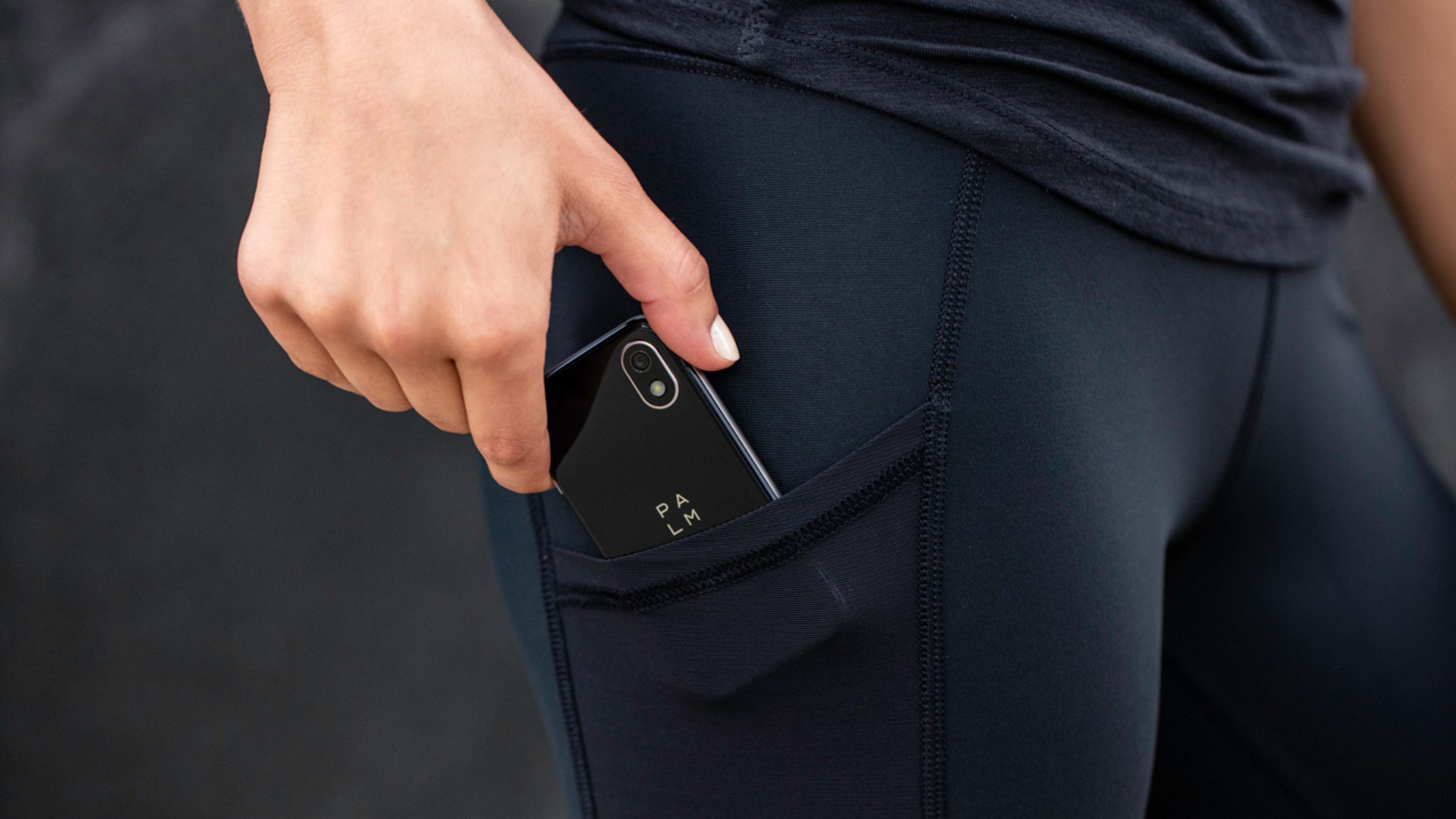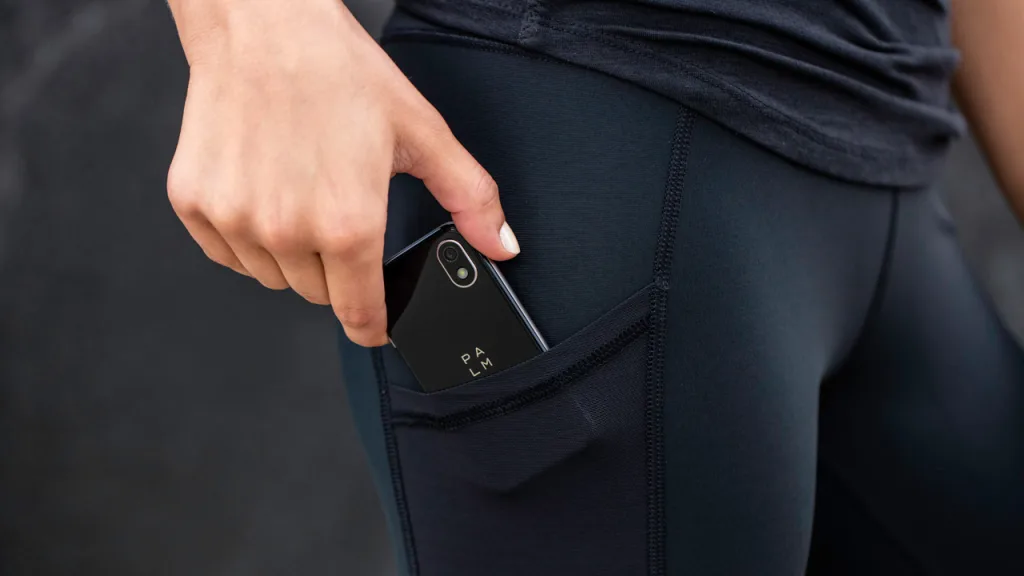I learned a fun fact about smartphones over my holiday break: On average, we touch them more than 2,600 times a day. That’s on par with the number of times you touch your own face. To say that we “identify” with our phones, apparently, is not just a figure of speech.
It also threw the purpose of my “smartphone detox” regimen into sharp relief. I’ve been testing two devices designed to break this shameful phone-fondling cycle: the Punkt MP02 and the Verizon-powered Palm. After experiencing the MP02’s tough-love approach to discouraging mobile distraction, I was eager to see how Palm’s diminutive “companion” device–it’s kind of like a smartwatch, but in phone form–would fare.
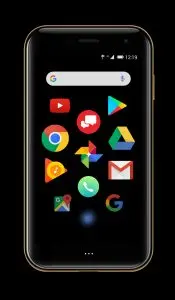
When it first appeared in late 2018, the credit-card-sized Palm was easy to mock–insert Zoolander reference here–because its guiding design concept didn’t make obvious sense. The Palm is supposed to be a lightweight sidekick to your “real” phone that doesn’t demand as much from you. Basically, if you want to leave your giant smartphone at home while you hit the gym or the bars, but you still want to stay on the grid–just without the constant barrage of internet-enabled distractions–you can use something like the Palm instead. This use case is easy enough to grasp if the secondary device is not just minimalist in size but also in functionality. (For example, the Light Phone, another “sidekick” device, makes voice calls and that’s it.) But the Palm has a touchscreen, front- and rear-facing cameras (including face-recognition for unlocking), and a full Android OS that basically does everything your current smartphone does.
If you already have a fancy phone that you wish you could get away from, why would you complement it with a device that’s essentially identical, just tinier?
Then again, using the Punkt MP02 had opened my mind about how the physical shape of a phone, not just its features, could have a big influence on how I interact with it. (Yes, I know: If you’re an industrial designer, you probably want to slap me right now.) For all I knew, maybe a shrink-rayed smartphone really would cut down on my mindless usage.
To my great surprise, it did.
Once I paired the Palm with my existing phone number so that all calls and texts would be mirrored on the new device (via Verizon’s NumberShare system), I left my iPhone at home as often as I could. And as soon as I slipped the Palm into my pocket, it was as if the device vanished into thin air. The Punkt MP02 had a similar effect on me, but the Palm really nailed it. I didn’t want to play with the phone, because often, I truly forgot it was there. If smartphone liberation is a state of mind more than anything else, simply making our devices smaller might matter more than we think.
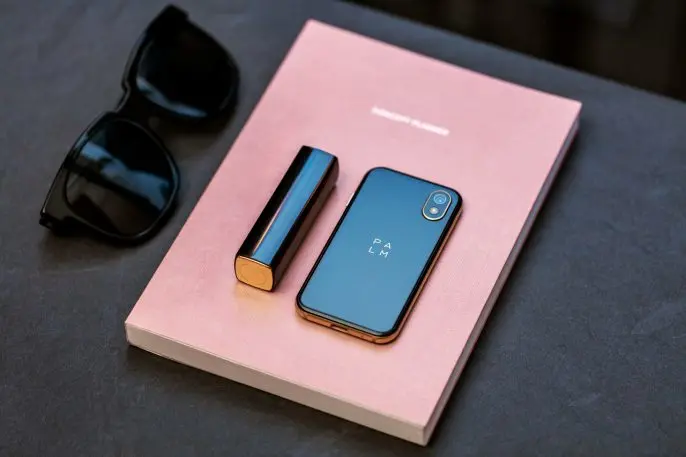
The Palm’s conspicuous littleness (I almost wrote “widdle-ness,” it’s that adorable) also encouraged me to handle the device in a more casual way than I’m used to doing with a smartphone. Where the iPhone’s mere presence in my line of sight acts like a cognitive Batsignal, constantly daring me not to pay attention to it, the Palm felt more like my keys, which I have no qualms about tossing absentmindedly into a wooden dish next to my computer and then forgetting about for hours. I often did the same thing with the Palm.
The tiny 3.3-inch screen also created a surprisingly powerful disincentive to “dork around” on the Palm’s full-featured apps. One day on the bus, I succumbed to temptation and fired up the Chrome web browser for no other reason than “I was bored, and it was there.” But after a minute or two, I just stopped. Not only did I feel ridiculous squinting at Buzzfeed on a screen smaller than my library card, it just wasn’t any fun. Same with my email: peering at microfiche-sized unread messages inspired exactly zero desire in me to open any of them, or to keep checking for more. Back into my pocket went the Palm.
Reading these impressions, you might think that the Palm is designed to be, well, boring. That’s not true: if anything, the device feels like a classy-but-functional piece of jewelry, like a gold money clip or compact makeup mirror–or the future-retro (and relatively tiny) phone that Joaquin Phoenix uses in the movie Her. People asked me about the Palm when they saw me using it. Boring, it ain’t.
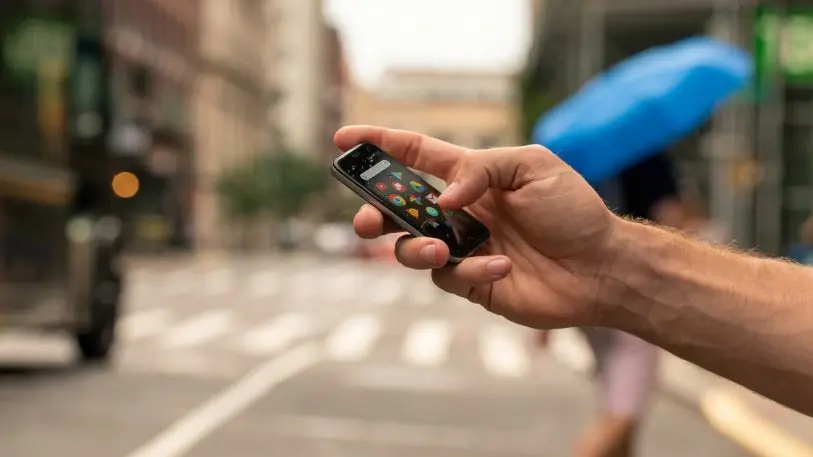
Instead, the Palm is subtly depersonalized compared to normal smartphones. I didn’t “identify” with the Palm because it’s too physically small to transform into an avatar of my personality–I couldn’t put a giant picture of my kids on the lock screen, I couldn’t change the visual arrangement of apps all that much, and other software settings (like ringtones) were, frankly, too much of a pain to fuss with on that tiny screen to inspire me to change the defaults. The pre-installed apps feel curated for utility, not entertainment, and even though I could install whatever nonsense I wanted from Google Play, I never felt any desire to.
The whole user experience of the Palm feels designed to gently nudge you off the device unless you have a specific, meaningful reason to be using it. (In this context, even the relatively poor battery life comes off as a feature, not a bug.) Palm’s biggest design coup may well be in positioning its device as stylish and capable, but just a device–not a bottomless vessel for emotional investment.
Of course, the Palm’s size also came with its share of annoyances. Texting on that dinky screen wasn’t exactly a cakewalk. And using turn-by-turn navigation in Google Maps was a bit of a joke: The Palm was too small to fit into my car’s dashboard phone-holder, so I just dropped it into the cupholder and consulted its screen when stopped at red lights, as if it were a paper map. (I made lots of wrong turns before realizing that I could activate the voice assistant and just let it guide me non-visually.) Also, a smartphone this small and thin suffers from the same problem as its oversized cousins–it’s exceedingly easy to let slip out of your hands by accident.
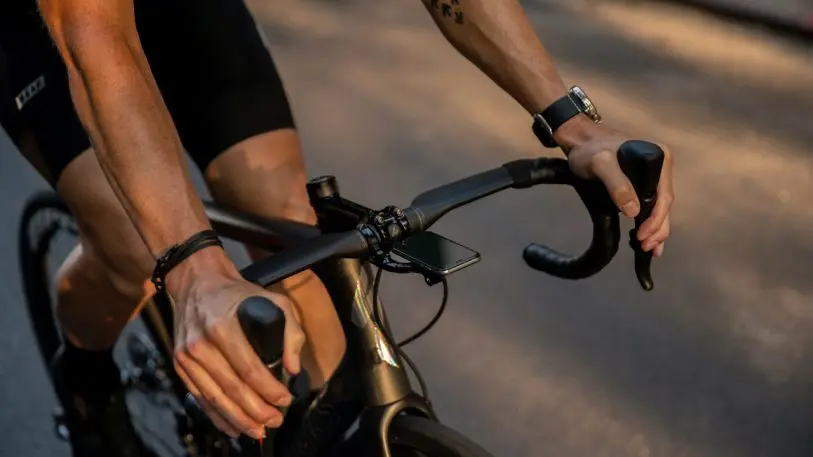
Still, these flaws felt like relatively trivial trade-offs when weighed against the positive impact the Palm was having on my phone addiction. Much like the Punkt MP02, the device’s physical constraints were encouraging me to use the thing as a tool, not a toy–to enjoy the practical benefits of being constantly connected while short-circuiting the mindless habits that come along for the ride. But unlike the MP02, using the Palm never felt like the mobile-phone equivalent of eating kale at every meal. It wasn’t stern and ascetic, it was cute and forgiving. I was this close to seriously considering getting rid of my iPhone for it.
Alas, there were dealbreakers.
First, Verizon won’t let you use the Palm as a primary phone. Palm doesn’t sell an unlocked version of its device, and the only way Verizon will activate it is via its NumberShare system, which was originally created to support smartwatches and wearables paired to an existing line. Technically, the Palm does get its own unique phone number, because you have to establish an additional phone line for it (at $10 per month) with Verizon. NumberShare hides this new phone number from view on the Palm itself, but if you really wanted to, you could just look it up in your Verizon account statement and tell everyone that was your new phone number. Still, Verizon would force you to keep your primary line with your “real” smartphone active, and all your outgoing calls and texts from the Palm would still look like they came from that primary number. Embracing all that confusion, while paying a monthly fee to prop up a phone I’m not even using, just to use the Palm instead–which, don’t forget, has its own monthly fee–would just feel idiotic.
(A rep for Palm told me via email that the phone is available in Europe and Asia as a stand-alone device,”and we are working on bringing that option to the U.S. based on customer feedback.”)
Second, while the number-sharing system between the Palm and your primary phone works seamlessly for voice calls, for texting it feels borderline broken. You have to install Verizon’s Message+ app on both devices to get the text-message forwarding to work, and in my experience some things got lost in translation. (My 2-step verification texts from Twitter, for example, mysteriously failed to ever appear on the Palm.) This seems more like a Verizon problem than a Palm problem, but since the two are joined at the hip, it’s unavoidable.
And, since Palm runs Android, iMessage just doesn’t work at all. You have to literally deactivate it on your primary phone in order to receive any text messages. I feel a bit sheepish admitting this, but not having my text messages seamlessly mirrored between all my various iThings–a phone, two tablets, and my laptop–felt like a bridge too far. If you’re an Android user or WhatsApp devotee, this adjustment may not hurt. But if (like me) you’ve come to depend on Apple’s blue bubbles for keeping all your texts with your loved ones in neat, perfectly synced, GIF-embellished threads, then the Palm just isn’t going to feel worth the trouble.
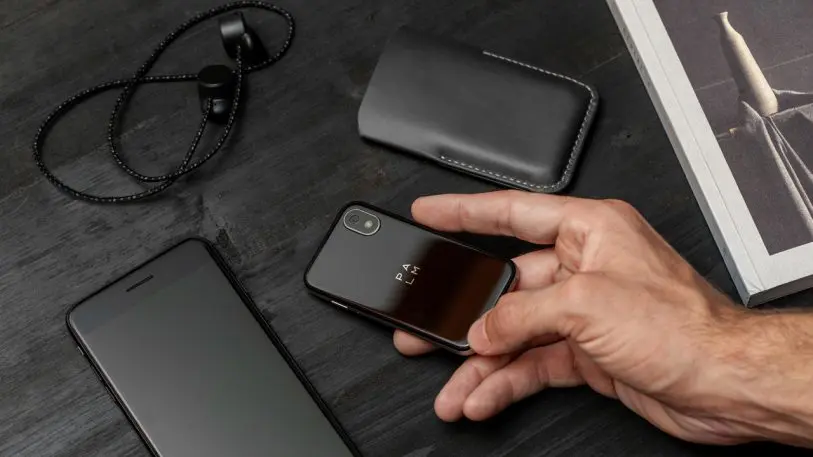
Finally: Life Mode.
Aside from the Palm’s physical size, “Life Mode” is the device’s flagship feature. It’s supposed to be a way for you to keep your notifications at bay while you, you know, live. In practice, it’s no different than Airplane Mode on a regular smartphone–a blunt instrument that silences all incoming boops and beeps, regardless of their source or importance. I fiddled with the Palm’s “Do Not Disturb” submenu in an attempt to allow notifications from certain VIP contacts, but Life Mode still blocked everyone and everything. (As one of those VIPs dryly noted after not being able to reach me: “It may have Life Mode, but it ain’t got Wife Mode.”)
Knowing that Life Mode was equivalent to going off the grid made me feel anxious about using it. While enjoying a weekend hike–an “active” use case that Palm encourages using Life Mode for–I turned the feature off, because having it on had the paradoxical effect of making me feel more aware of my phone.
So, by the end of my week road-testing the Palm, I felt even more disappointed than I did with the Punkt because it came that much closer to freeing me from my smartphone addiction, but still failed to stick the landing. But, again, this may speak more to my own preoccupations than to the device’s strengths or weaknesses. The truth is–at least in the U.S., for now–Palm doesn’t really want you to break up with your “real” phone. It just wants to hitch a ride on that powerful, pre-existing relationship, like a remora latching onto a shark. I dragooned the device into doing something it was almost but not quite designed to do, and it was almost but not quite successful.
Next week, I’ll share what happened when I stopped relying on another phone to get me to stop using my phone so much. Stay tuned.
Recognize your brand’s excellence by applying to this year’s Brands That Matter Awards before the early-rate deadline, May 3.
